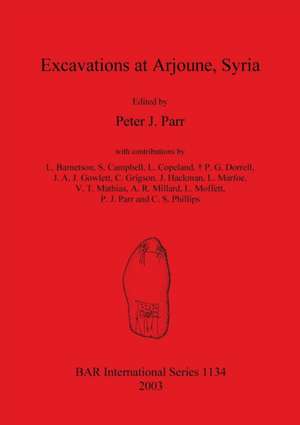Excavations at Arjourne, Syria
Editat de Peter J. Parren Limba Engleză Paperback – 20 iul 2003
Preț: 704.89 lei
Preț vechi: 774.60 lei
-9% Nou
Puncte Express: 1057
Preț estimativ în valută:
134.90€ • 139.77$ • 112.58£
134.90€ • 139.77$ • 112.58£
Carte tipărită la comandă
Livrare economică 21 martie-04 aprilie
Preluare comenzi: 021 569.72.76
Specificații
ISBN-13: 9781841715070
ISBN-10: 1841715077
Pagini: 300
Dimensiuni: 210 x 297 x 19 mm
Greutate: 1.16 kg
Editura: British Archaeological Reports Oxford Ltd
ISBN-10: 1841715077
Pagini: 300
Dimensiuni: 210 x 297 x 19 mm
Greutate: 1.16 kg
Editura: British Archaeological Reports Oxford Ltd
